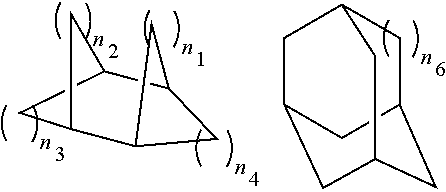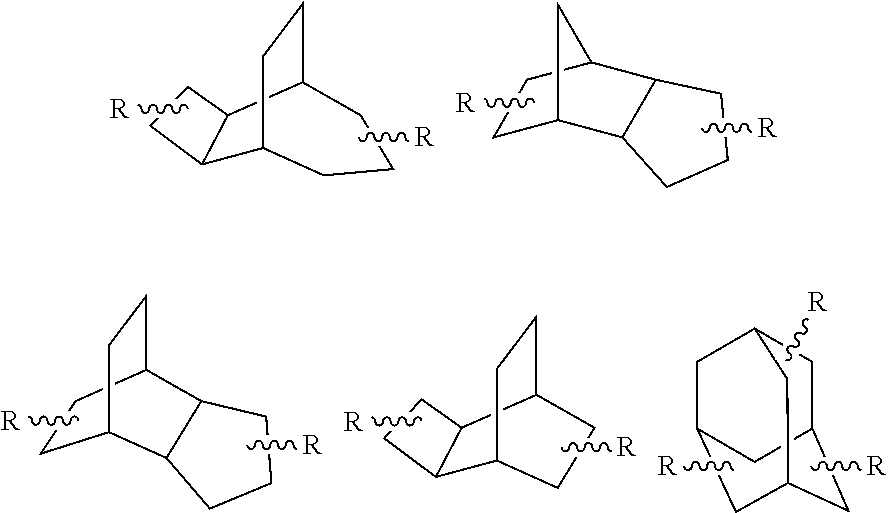Dental composite materials comprising tricyclic plasticizers
a composite material and tricyclic plasticizer technology, applied in dental prosthetics, dental preparations, disinfection, etc., can solve the problems of insufficient softness imparted to the composition after polymerization, adversely affecting the human body, and composition becomes too soft for a soft base material, etc., to achieve low water solubility, good mechanical stability, and low water absorption
- Summary
- Abstract
- Description
- Claims
- Application Information
AI Technical Summary
Benefits of technology
Problems solved by technology
Method used
Image
Examples
examples
3(4),8(9)-bis(acetyloxymethyl)tricyclo [5.2.1.02,6]decane (“TCD” Plasticizer)
[0239]10 drops of concentrated sulfuric acid are added to 98.15 g (0.5 mol) of tricyclo[5.2.1.02,6]decane-3(4),8(9)-dimethanol and 102.09 g (1.0 mol) of acetic anhydride, and the mixture is stirred on a rotary evaporator (without vacuum) until a homogeneous solution has formed. This is followed by heating to 100° C. under reflux for 2 h. After cooling, the reaction mixture is added to 300 ml of ice-water and extracted with dichloromethane. The combined organic phases are deacidified with sodium carbonate solution and washed with water. The mixture is dried over magnesium sulfate and filtered, and the solvent is removed under reduced pressure. 136.09 g (0.49 mol; 97.1%) of a pale yellow oil are obtained.
[0240]C16H24O4 (280.36 g / mol)
[0241]Viscosity: 136.8 cSt
[0242]nD20: 1.487
[0243]IR (film; cm−1): 2946 (m, vC—H); 1735 (vs, vC═o); 1446 (w, δC—H); 1367 (m, δC—H, acetyl); 1229 (vs, vC—O); 1029 (s)
1,3,5-triacetyl...
PUM
| Property | Measurement | Unit |
|---|---|---|
| mean particle size | aaaaa | aaaaa |
| flexural strength | aaaaa | aaaaa |
| molar masses | aaaaa | aaaaa |
Abstract
Description
Claims
Application Information
 Login to View More
Login to View More - R&D
- Intellectual Property
- Life Sciences
- Materials
- Tech Scout
- Unparalleled Data Quality
- Higher Quality Content
- 60% Fewer Hallucinations
Browse by: Latest US Patents, China's latest patents, Technical Efficacy Thesaurus, Application Domain, Technology Topic, Popular Technical Reports.
© 2025 PatSnap. All rights reserved.Legal|Privacy policy|Modern Slavery Act Transparency Statement|Sitemap|About US| Contact US: help@patsnap.com



